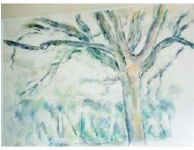Tuesday, July 17, 2018 -  illicit antiquities,illicit trade in antiquities,illicit trafficking,Romania,Serbia,William Veres
illicit antiquities,illicit trade in antiquities,illicit trafficking,Romania,Serbia,William Veres
 No comments
No comments
 illicit antiquities,illicit trade in antiquities,illicit trafficking,Romania,Serbia,William Veres
illicit antiquities,illicit trade in antiquities,illicit trafficking,Romania,Serbia,William Veres
 No comments
No comments
Quotes given by ancient art dealer William Veres outlining Balkan trafficking methods.
 |
| Image Credit: Screenshot from documentary “The Hunt for Transylvanian Gold.” |
In 2008, following a ten-year investigation coordinated by Prosecutor General Augustin Lazăr of Romania, a number of individuals were charged in connection with illegal excavations carried out in the dense forests of the Orăştie Mountains in the vicinity of the Sarmizegetusa Regia fortress, one of six heritage sites which make up the UNESCO World Heritage site of the Dacian Fortresses of the Orăştie, dating to the mid-first century BCE. To date twenty-eight individuals have been named in connection with this multinational investigation which has resulted in antiquities recoveries from New York, Zurich, Paris, Munich, and Hunedoara – Romania.
Some of the persons identified in this complex investigation include Ioan Bodea, Radu Horia Camil, Iulian Ceia, Călin Ciota, Călin Corhan, Ciprian Hidişan, Daniel Jurca, Ilic Ljubisa, Ilie Luncan, Viorica Luncan, Daniel Moc, David Magda, Ion Nedelcu, Miu Nedelcu, Adrian and Florin Nistor, Ovidiu Olah, Remus Pop, and Mihai Zerkula, each of whom were associated in some way with a criminal enterprise that has been identified as being involved in unauthorized excavations conducted in the Dacian citadels in the Orăştie Mountains, located in the counties of Hunedoara and Alba, in Romania.
In 2017 details of this looting case, which began in the capital of the Dacians civilization in the central mountains of Romania, were detailed in a fifty-minute documentary called “The Hunt for Transylvanian Gold.”
Of the 24 gold spirals, stolen between 1998 and 2001, only 13 have been recovered. They are now on display at the Muzeul Național de Istorie a României. Six of the bracelets are believed to have passed through the hands of one antiquities collector, Ilic Ljubisa, believed to have been the organizer of a group of traffickers known as the "Serbian cartel" which operated out of Zurich. Ljubisa bought three pairs of the gold spirals and is believed to have been involved in their transport to Belgrade.
To understand how Romania's golden artifacts made their way out of Romania via Serbia and onto the antiquities market, the documentary makers, Boston-based Kogainon Films, interviewed many people, including Hungarian born and London-based antiquities dealer William Veres. Veres is now the subject of his own multinational police investigation of antiquities trafficking originating in Italy.
In the documentary, Veres is filmed making several interesting, if not quite incriminating, statements regarding the methodologies used by the antiquities handlers caught up in the Dacian gold looting case.
Veres comments on the city of Belgrade in Serbia and its role in the illicit trade of cultural heritage
“Belgrade, as you know, is *inaudible* the biggest capital maybe in the whole world for stolen art. So...the....let's call it the Serbian mafia, it would be a number of individuals who, would, amongst other things, deal with ancient objects and would have clients in the west.”
Veres comments on the differences between art dealers in Western Europe and art dealers in the Balkans
“I've known these people as dealers, and as I say, you can look at this in a...in another context, as I say, if, the laws in countries like Serbia and Romania were different, these people wouldn't be much different from myself. But the point is that, this activity you can carry on legally in somewhere like Germany, France, even Italy, let's say, and in other countries, you can't carry it on because of the nature of cultural.... the laws of cultural property.”
While drawing out a hypothetical illicit trafficking route, Veres comments on how plundered art moves from Romania to Serbia
“In the case of these spirals, once you have, once they are here in Belgrade, then of course they go to ahh Vienna, ummm Munich, maybe Zurich, and Geneva. These are the, I would say, the first stops, and from here then, to America. So it is a personal trade, run by professionals, who know what they are doing very, very well. The bus drivers they know where to hide things. So you give them a small package, you know, five hundred euros and I'm sure ahhh this can be transported to Belgrade, to Vienna overnight. It's very efficient, like DHL.”
Efficient like DHL. Words worth remembering.
By: Lynda Albertson
















